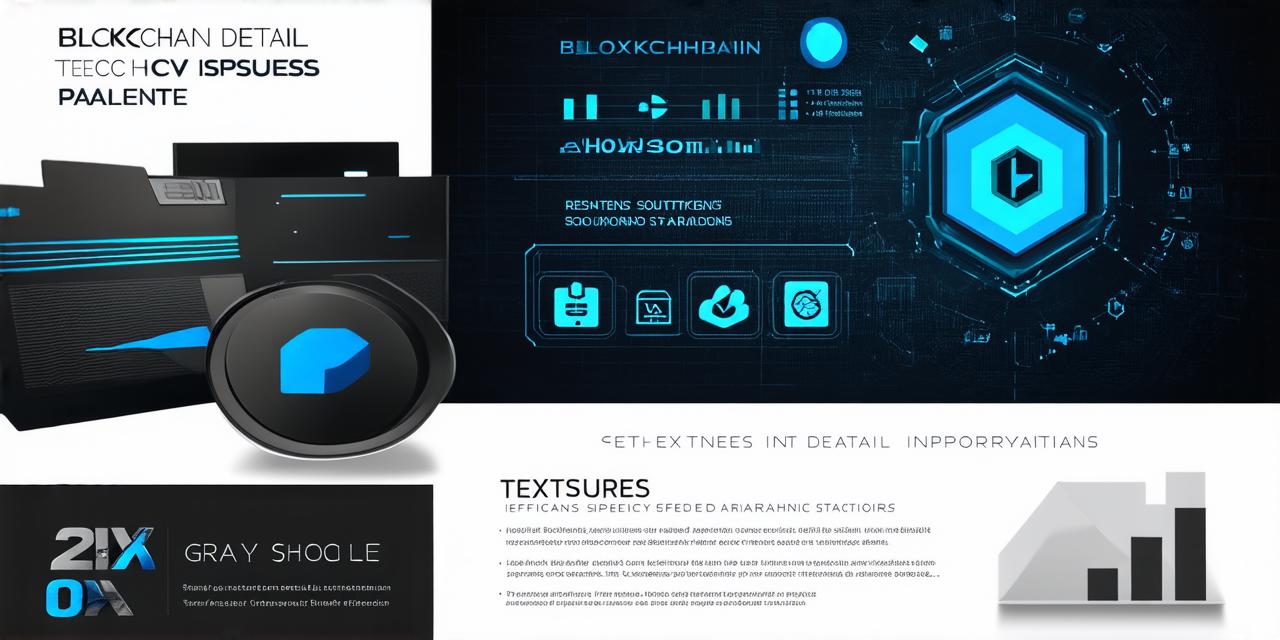Blockchain technology has been hailed as a revolutionary innovation that has the potential to transform various industries. From finance and healthcare to supply chain management and voting systems, blockchain-based solutions have shown promising results in solving complex problems and improving efficiency. However, despite its numerous benefits, one of the significant drawbacks of blockchain is its slow performance. In this article, we will explore the reasons behind blockchain’s slowness and analyze ways to optimize its performance for better user experience.
Understanding the Basics of Blockchain Performance
Before delving into the specific issues that affect blockchain’s speed, it is essential to understand how blockchain works and what factors contribute to its performance. At its core, a blockchain is a distributed ledger that records transactions in a secure and transparent manner. Each transaction is verified by multiple nodes, which ensures the integrity of the data stored on the network.
The performance of a blockchain is primarily dependent on three main factors:
- Network capacity: The number of nodes participating in the network can significantly impact its throughput and latency. A larger network with more nodes can process more transactions per second, but it also leads to higher network congestion and slower transaction speeds.
- Block size: The size of the blocks mined on the blockchain also affects its performance. Larger blocks can store more data, but they take longer to verify and validate, leading to slower transaction times.
- Consensus mechanism: The consensus mechanism used by the blockchain network plays a crucial role in determining its performance. Proof of Work (PoW), Proof of Stake (PoS), and Delegated Proof of Stake (DPoS) are the most common consensus mechanisms, each with their strengths and weaknesses.
Blockchain Performance Issues: A Comprehensive Analysis
Despite its numerous advantages, blockchain faces several challenges that affect its performance. In this section, we will explore some of the most significant issues and analyze ways to mitigate them.
1. Scalability Limitations
One of the primary reasons for blockchain’s slow performance is its scalability limitations. The current consensus mechanisms used by blockchain networks are not designed to handle an increasing number of transactions. As a result, the network becomes congested, leading to slower transaction times and higher fees.
2. Gas Fees
Gas fees, also known as transaction fees, are an essential aspect of blockchain networks that enable users to pay for their transactions. However, gas fees can become expensive, especially during periods of high network congestion, making it difficult for users to process their transactions at a reasonable cost.
3. Storage Limits
Blockchains are known for their immutable and secure data storage capabilities. However, this feature also poses a challenge when it comes to performance. Since every transaction is stored on the blockchain, the amount of data that needs to be stored can become enormous, leading to slower performance and higher costs.
4. User Experience Issues
Slow blockchain performance can have a significant impact on user experience. Transactions that take too long to process can lead to frustration and loss of trust in the network. Additionally, high transaction fees can make it difficult for users to afford transactions, limiting the adoption of blockchain-based solutions.
Blockchain Performance Optimization Strategies
In conclusion, blockchain performance issues are a significant challenge that must be addressed to improve user experience and adoption of blockchain-based solutions. In this section, we will explore some strategies that can help optimize the performance of blockchain networks.
1. Network Upgrades
Network upgrades, such as increasing the number of nodes or implementing new consensus mechanisms, can significantly improve the performance of a blockchain network. For example, Ethereum’s upcoming Ethereum 2.0 upgrade aims to improve the network’s scalability and performance by introducing sharding and a new proof-of-stake consensus mechanism.
2. Off-Chain Solutions
Off-chain solutions, such as the Lightning Network, can help reduce the load on the main blockchain network and improve transaction speed. These solutions enable users to make transactions off-chain, reducing the amount of data that needs to be stored on the blockchain and improving performance.
3. Layer Two Solutions
Layer two solutions, such as Raiden and Plasma, can help optimize the performance of a blockchain network by enabling users to make transactions off-chain while still maintaining the security and integrity of the data stored on the blockchain.
4. Consensus Mechanism Selection
The selection of the right consensus mechanism can significantly impact the performance of a blockchain network. Developers should carefully consider the strengths and weaknesses of different consensus mechanisms and choose one that best fits their needs.

5. User Experience Optimization
Developers should prioritize user experience when optimizing the performance of a blockchain network. This can involve implementing caching mechanisms, reducing gas fees, or using alternative consensus mechanisms that prioritize user experience over security.
Conclusion
In conclusion, blockchain’s slow performance is a significant challenge that must be addressed to improve user experience and adoption of blockchain-based solutions. By understanding the basics of blockchain performance, exploring specific issues that affect its speed, and implementing strategies to optimize its performance, developers can create more efficient and effective blockchain networks that meet the needs of their users.
FAQs
1. What is the main reason behind blockchain’s slow performance?
- The main reason behind blockchain’s slow performance is its scalability limitations.
2. How do off-chain solutions help optimize the performance of a blockchain network?
- Off-chain solutions, such as the Lightning Network, can reduce the load on the main blockchain network and improve transaction speed by enabling users to make transactions off-chain.
3. What are some layer two solutions that can help optimize the performance of a blockchain network?
- Some layer two solutions that can help optimize the performance of a blockchain network include Raiden and Plasma.
4. What is the difference between a consensus mechanism and an off-chain solution?
- A consensus mechanism is a protocol that enables nodes on a blockchain network to agree on the state of the ledger, while an off-chain solution is a mechanism that allows users to make transactions off-chain, reducing the load on the main network.
